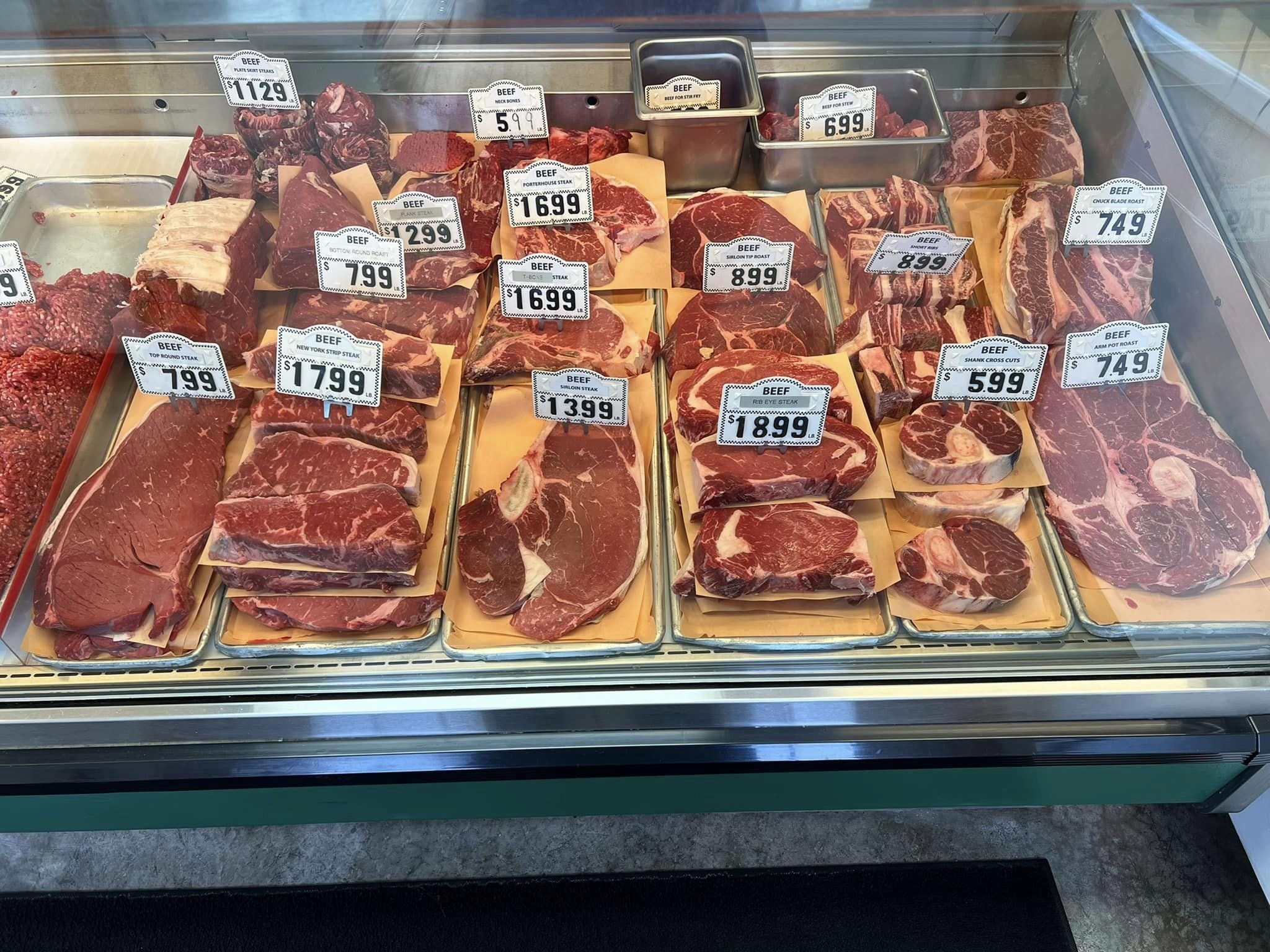How to Select the Perfect Cut of Meat From a Trusted Meat Market
Picking the optimal cut of meat from a relied on meat market calls for a thoughtful method that stabilizes top quality, cooking objective, and budget. Comprehending the different types of meat and their corresponding cuts is important, as is engaging with your butcher to get understandings right into sourcing and prep work.
Recognizing Meat Cuts


For example, the tenderloin is valued for its buttery appearance and minimal connective cells, making it suitable for quick food preparation methods such as cooking or pan-searing. On the other hand, tougher cuts like the brisket or shank take advantage of slow food preparation techniques to damage down collagen, generating rich and flavorful results.
In addition, the fat web content of a cut plays a critical duty in taste account and wetness retention during cooking. Cuts with greater fat content, such as ribeye, use a more durable taste, while leaner options, like sirloin, might require cautious prep work to stay clear of dryness (bagley meat market edwardsville il). Recognizing these nuances permits educated choices that raise cooking developments, guaranteeing that each dish showcases the most effective top qualities of the selected meat
Elements to Consider
When choosing the best cut of meat, numerous crucial aspects come into play that can dramatically impact the final meal. Primarily, consider the type of meat you want-- beef, pork, lamb, or poultry-- as each offers special tastes and appearances. The particular cut within that classification is similarly crucial; for example, ribeye supplies abundant marbling, while tenderloin gives a lean, buttery appearance.
An additional factor is the food preparation approach you intend to make use of. Cuts ideal for barbecuing, such as T-bones or sirloins, vary from those far better fit for sluggish cooking, like chuck roasts or shanks. Furthermore, freshness is critical; always choose meat with a vivid color and firm structure, indicating high quality and appropriate handling.
Costs cuts might offer exceptional preference, but there are additionally affordable choices that, when prepared properly, can yield scrumptious results. Stabilizing these elements will certainly help you pick the best cut for your culinary requirements.
Questions to Ask Your Butcher
A butcher's competence can be invaluable when selecting the excellent cut of meat for your culinary ventures. Begin by making inquiries about the source of the meat.
Next, inquire about the different cuts readily available for the sort of meat you choose. An educated butcher will clarify the nuances of each cut, assisting you select one that matches your food preparation approach and desired outcome. Don't wait to ask about the very best food preparation strategies for a specific cut; butchers typically have suggestions that can improve your recipe.
It's additionally sensible to ask you can try this out regarding the meat's freshness. A great butcher will be excited to share their know-how and recommend cuts that will certainly delight your taste buds. Involving your butcher with these inquiries can substantially boost your meat option experience.
Identifying Top Quality Meat

Appearance is an additional vital element; high quality meat must feel solid and somewhat springy to the touch. Prevent any kind of cuts that feel slimed or excessively completely dry, as these can indicate perishing or incorrect storage. Additionally, odor plays an important role; fresh meat should have a tidy, neutral aroma, while any repulsive or sour smells are warnings.
Finally, consider the source. Acquiring from a credible meat market, where the meat's beginning is recognized, can ensure greater quality standards. By focusing on these signs-- color, marbling, texture, smell, and source-- you can with confidence pick cuts that will certainly elevate your cooking and eating experience.
Food Preparation Methods for every Cut
Choosing the appropriate cooking technique is extremely important for making the most of the flavor and inflammation of each cut of meat. Different cuts have distinct characteristics that dictate one of the most ideal food preparation methods.
For tender cuts, such as filet mignon or ribeye, completely dry warm methods like cooking, broiling, or pan-searing are optimal. These strategies boost the natural tastes while making sure a juicy, delicious appearance. Conversely, harder cuts, such as chuck or brisket, take advantage of wet warm techniques, including braising or sluggish food preparation. These approaches assist break down connective cells, causing visite site a tender, flavorful recipe.
Pork chops and poultry breasts are versatile and can be prepared using both dry and damp methods. While barbecuing or roasting can generate tasty outcomes, poaching or sautéing can keep moisture and inflammation. For lamb, methods like roasting or braising are suggested, as they complement the his explanation meat's durable flavor.

Conclusion
In final thought, picking the optimal cut of meat from a respectable meat market demands a thorough understanding of meat cuts and consideration of numerous elements, consisting of source, quality, and cooking approaches. Engaging with the butcher via targeted questions can generate beneficial understandings and recommendations tailored to certain cooking requirements. Focusing on both quality and spending plan will certainly enhance the general gastronomic experience, ensuring that the picked cut satisfies expectations in both flavor and preparation.